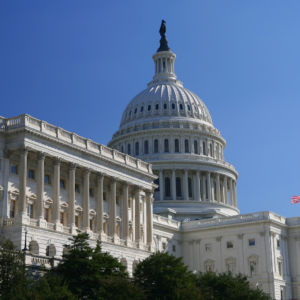Community banks — and those who depend on them — have plenty to celebrate. For America’s cash-strapped entrepreneurs, Dodd-Frank reform, signed Thursday by President Trump, is long overdue.
The legislation raises the level at which financial institutions are considered “systematically important” and exempts smaller banks from several Dodd-Frank mandates. Community banks would not have to go through a costly “stress test” to prove their financial sustainability.
Passed with good intentions after the Great Recession, the Dodd-Frank Wall Street Reform and Consumer Protection Act has become a poster child for unintended consequences. The legislation inundated the U.S. financial sector with more than 400 new regulations — five times more than any other law passed since 2009. To enforce the legislation, the federal government hired 3,000 full-time employees.
As you might imagine, Dodd-Frank didn’t come cheap. Since its inception, the law imposed well over $36 billion in regulatory costs on the U.S. economy and flooded those affected with 73 million paperwork hours. Dodd-Frank costs roughly $112 per person and $310 a household to enforce, and it would take nearly 37,000 employees working full-time to complete the paperwork required by the law in a single year.
Dodd-Frank also created the Consumer Financial Protection Bureau, a federal agency that imposes penalties on auto lenders, short-term loan providers, and other financial institutions outside the purview of congressional oversight. To date, the CFPB has ordered more than $5 billion in total penalties, making it more difficult for creditors to provide working Americans with the capital they need to start a business, cover labor costs and provide for their families.
Community banks — some of America’s most important lenders — are perhaps the most adversely affected. Prior to the passage of Dodd-Frank, an average of over 100 banks opened annually. Since then, only a handful of local banks have opened in the United States. Moreover, community banks have seen their asset share decline by 12.4 percent.
This is a devastating blow to American entrepreneurship. Despite making up less than 20 percent of the banking industry’s assets, local banks provide nearly half of its small business loans.
Without them, many entrepreneurs struggle to find capital to invest in a storefront, new employees and other business expenses. That initial seed money is integral for job creators to grow their businesses and provide employees in their communities with career opportunities.
Female entrepreneurs are especially in need of the credit that community banks have traditionally ensured. While women own one-third of all small businesses, they receive less than five percent of total dollars in conventional small business loans made. Last year, the average funded business loan for women-owned firms came out to $57,097 — down from roughly $100,000 the year before. The average size of a business loan for male entrepreneurs, meanwhile, remained stable at $103,604.
Women launch an average of 850 new businesses per day, but the decline of community banks makes it more difficult for them to stay afloat. Lawmakers can help female entrepreneurs by cutting the red tape strangling their lenders — and, by extension, their businesses.
This is a bipartisan priority. While Republicans have long sought to reform Dodd-Frank, Democrats also recognized the importance of protecting community banks from government overreach. In 2016, 70 senators signed a letter urging then-CFPB Director Richard Cordray to exempt local banks from many of the agency’s mandates. Led by Sens. Joe Donnelly, D-Indiana, and Ben Sasse, R-Nebraska, the Senate coalition described community banks as “essential to spurring economic growth and prosperity at a local level” and called for the CFPB to “prevent any unintended consequences that negatively impact” them.
They’re right. Now we can usher in a new era of American entrepreneurism — for men and women alike.

